Saffron - the plant is quite ancient and surprisingly beautiful. His cultivation paid special attention to the ancient Egyptians and residents of the East. This flower is valued as a spice, medicinal plant and an expensive dye. There are many legends associated with the ancient Greek gods about him. But how best beauty saffron! It is worth just to look at the lilac sea of \u200b\u200bspring flowers, which their paints are able to decorate even the sky, and this spectacle will forever captures in your memory. Capricious saffron can not be called, but it is to grow it according to certain rules. So that you do not have any problems, consider all the subtleties of growing and care for this wonderful flower.
Saffron, description
- Saffron (Other Name Crocus) - Clubnelluki culture of the family of iris. This perennial grassy plant is distributed in the steppes and meadows of Europe and Asia.
- Saffran bulbs are small, their diameter does not exceed 3 cm. Their form round or slightly fightened. From the outside of the bulb is dressed in scales.
- Saffle Saffle is underdeveloped. Hardery socket is formed from the root stretching linear leaves. All Saffra leaves are united by vaginal scales. The growth of foliage may precede flowing or, on the contrary, begin after filing colors.
- Flowers of saffron are formed in the form of semi-open stretched buds up to 8 cm in height. Single flowers. From one bulwery sometimes grows 2-3 boutons, covered with film scales. A large perianth has a funnel shape, a twentiest tweet, smoothly goes into a cylindrical tube. Stamens are short, attach to Zev, and the anthers are higher, linear.
- Crocus fruit - three-minute boxes. Seeds of saffron angular shape, very small. Depending on the type of bloom, it is autumn or spring.
- The colors of the saffron buds is diverse, but taking into account the color, all kinds are divided into two groups: yellow-ceiling crocuses (color of petals from yellow to flame red) and shinighter (color from pale-purple to saturated-purple).
Interesting! Shafran's strokes - a wonderful dye: 1 g of a flower can paint in yellow of 100 liters of water.
Translated from the Arab Safran ("Zeferean") means "yellow", and the name "Crocus" - Greek origin and means "thread".
According to ancient Greek mythology, Shafran first bloomed on Mount Ida, when the marriage ceremony of Zeus and Gera took place on it.
At the time of the Roman emperors, Shafran was considered a sign of wealth and waste. To know, used saffron to obtain bright colors, with it, flavored water, decorated the floors in the halls, stuffed the petals of crocuses of the pillow.
In the cooking, Safran has always been considered for the weight of gold. It is still an excellent seasoning. Its cost is high, because to obtain 1 kg of spices it is necessary to grow and collect 200 thousand saffron buds.
No less important role Safran takes in landscape design. As soon as the movements of multi-colored carpets are gold, purple, purple, pestry, creamy-white - animated any garden plot.
Interesting! The industrial cultivation of the saffron continues for more than 3,000 years and, despite such a long time, this spice remains the most expensive worldwide.
Shafran varieties and varieties
Crocus has mail 80 species and more than three hundred varieties. All of them are divided into two groups of flowering time: Autumn (September-December) and spring (February-March). In nature, the saffron is not very common, but on an industrial scale grows a volatile amount of saffron for sale. Three leading countries exporter of Saffran - India, Spain, Iran.
The following varieties are very popular among gardeners:
- Crocus two-color. Wild-growing plantings of this saffron are found in the Caucasus, as well as in Crimea, Italy, Iran. Feature of the species - the appearance of two white-blue buds or bluish-purple-purple boutons. ZEV BOOTON is occurring snow-white and yellow.
- Saffron Spring. One of the most ancient species, which is more than four hundred years. Crocus is quite high - up to 18 cm in height. The root rosette form a reprehension, very narrow leaves. Their color is bright green with white stripes on the surface of the leaf canvas. Coloring white-lial buds. No more than two flowers are formed from the clubnewuk. Luxuriously blooms in spring for almost three weeks.
- Golden saffron. The form chose the stony slopes. This is one of the tall species. The content of buds is unusual - gently golden with brown podpales from the outside of the petals. Flowers in spring, cultivated for almost two centuries.
- Saffron Banatsky. An interesting view of the way from the Carpathians. Flowers in the fall, it strikes with a bizarre look: Silver-green luxurious socket, and tender-lilac-lilac boutons with orange stigmas. The bush is average - up to 15 cm in height.
- Crocus pretty. Dwarf view (up to 10 cm) with large buds of light purple color. This crocus is small and very fragile, but is distinguished by extreme endurance and frost resistance.
- Saffron sowing, or saffron garden. A variety appeared in Crete. The mid-grade bush with many thin saturated green leaves, among which there are a pair of purple buds, deshastable dark purple stripes. The picture is complemented by a red-orange stroke.
- Saffron Tommazini. The species is distinguished by wide open buds that appear in the last winter days. Color of buds - all shades of purple.
In the gardens, Saffran spring varieties are often found:
- JOAN OF ARC - Hybrid albino with snow-white buds;
- Mammoth Yellow - Bright golden crocus buds;
- Pickwick - white-white petals with purple strokes;
- RememBrance - large saturated-purple buds;
- Vanguard is a gentle variety with silver-purple flowers;
- Princess Beatrix is \u200b\u200ban exquisite combination of bluish petals and a golden base;
- Ladykiller - two-color buds with white color of petals from the inside and purple - outside;
- Snowbunting is a variety with a playful white-yellow colorful colors.
The autumn varieties of saffron is not so popular in gardening, nevertheless, the demand for them is still there:
- Albius - flowers of cream-white or snow-white colors;
- Artabir - an unusual hybrid with fancy curved lilac petals;
- Gullima - tenderness and grace are combined in light-lilac buds;
- Cassiope - a simple hybrid with blue flowers;
- Oxonion is a bright grade with navy blue buds.
Growing saffron
Mail in each garden is engaged in growing crocuses. They head the hierarchy of tuberukovic garden plants along with daffodils and tulips. Thanks to Shafran, it is possible to revive areas, parks, alleys in early spring, when the lawn has not yet placed, and the earth has not yet managed to warm up the sunlight. And only crocuses in such conditions are able to make a spring mood in the landscape.
Saffron Safety Requirements
Growth and subsequent flowering of crocuses by 75% depends on the chosen soil, so this moment needs to be paid to:
- Soil is preferably used ready. Special soils for crocuses can be found in any specialized store.
- If you are planning to grow saffron from seeds, the soil must be picked up loose, without lumps and impurities.
- To improve the structure of the soil, it is diluted with sand. On part of the soil give 1/5 of the sand. Sand is pre-wash, sieved, warm up in the oven for the destruction of microorganisms and dispute. You can use white and river sand.
- It is desirable to make a peat. It perfectly breaks the soil, it has a suitable level of acidity, it is biologically sterile. It increases the penetability of the soil, makes it porous and moisture.
- At the stage of soil preparation, fertilizers are not included for landing, if it is nutritious enough.
- The soil for saffron should not be sour. To normalize acidity per 1 kg of soil, 15 g of dolomite flour or 25 g of limestone is added.
Selecting Saffron Single Material
The success of the growing saffron will depend on the quality of tuberukovitsa or seed, if you are going to grow flower from the seed.
If your goal is to see the bloom in the first season, you will have to perplex an adult bulb. If you can wait a little longer, buy luki-kids (they bloom in a year) or post the seeds (buds will appear two seasons).
You need to choose the bulbs like this:
- A healthy instance on the surface there is no damage.
- A good bulb has a uniform color, specks and yellowish brown crusts.
- To the touch of tuberukovitsa dense, the scales tightly hold on.
- There is no pure, rot, and there are no spots, there are no traces of germination of roots.
Choose high-quality seeds more difficult, because you can not always see them through the packaging, besides, it is difficult to determine their freshness to the eye. In this case, it remains to believe the expiration date, which is indicated on the package, and before sowing, examine each seed. If stains are noticeable, the integrity or seeds will be damaged, they will smell badly, it is better not to plant them so as not to infect all the seedlings of the saffron.
Safran growing saffron
Time sowing seeds depends on the type. Spring varieties are seeded in September, autumn - in April. Saffron is rarely grown by the semid method and do it, as a rule, to obtain a large amount of seedlings, or for the cultivation of valuable, rare or poorly ametative reproduction of varieties.
Important! The collected saffron seeds are stored only in the refrigerator no longer than 6 months. Such conditions impede the drying of the sowing material, and also provide the necessary seed stratification.
To increase the germination, it is desirable to use freshly collected seeds. They are sown in containers or greenhouses.
Before sowing seeds of Saffran prepare:
- If the seeds were not stored in the refrigerator, they carry out a short stratification - hold them in the refrigerator 2-5 days.
- In warm water, the growth stimulator is bred and the seeds are soaked in it for 24 hours.
- Before planting, the seeds are additionally disinfected - soaked half an hour into a solution of potassium permanganate. You can do this only after soaking, so as not to burn the seed shell.
So that the shoots were thick and strong selecting whole and large seeds without visible defects. Sowing is carried out like this:
- Soil is pre-moisturized, not allowing the oveurgement of otherwise seeds rotate.
- In the prepared ground, seeds close to a depth of 10-16 mm, and completely crayons are simply scattered over the ground surface.
- Between the seeds withstand a distance of 1 cm, it will facilitate care and subsequent picking seedlings.
- After that, irrigation is not carried out, the exception is sowing small seeds that are non-soil: they are moisturized from a spray water sprayer.
- Until the germination of seedlings, the containers with seeds are covered with glass.
- Throughout this time, irrigation is not carried out, and to prevent the appearance of condensate, a greenhouse is ventilated.
- When shoots come up, the greenhouse is cleaned, rearrange the container into a bright place.
- It is starting to water them, and when seedlings stretch out 5 cm up, they are divened to the nutritional soil.
- For landing, use the same mixture as for sowing seeds with the addition of a small amount of the humus-containing component - a refown compost or biohumus. Its amount should be ¼ of the total weight of the soil.
- Pick seedlings in disinfected containers.
- Drainage must be laid on the bottom, for example, small gravel.
- A little chalk is added to the soil to reduce acidity.
- Watering is carried out as needed. The feeder is carried out once every 4-6 months with liquid mineral fertilizer with a predominance of potassium.
- When seedlings are fixed, they are transplanted into a flower garden or leave at home and grow as a room plant.
Growing saffron made of bulbs
The dates of landing depend on the period of flowering crocuses. Spring species are planted in a flower garden in September, and autumn - in the first weeks of summer.
The landing site is chosen as solar as possible, as a last resort - the half. To the soil, the requirements are tougher - it should be dry, very light and necessarily nutritious.
Saffron - landing on the flowerbed:
- Preparing the soil to landing with saffron, make a layer of large-scale sand as a drainage.
- Make a fitting of the soil by organica. It can be: compost or peat with lime.
- Before boarding, the saffron is treated with a fungicide for the prevention of fungal infections.
- The landing depth is equal to the two dimensions of the bulbs. If the ground is heavy, the landing depth is reduced by half.
- If a group landing of crocuses is carried out, the distance between the bulbs leaves small - up to 6 cm, otherwise the flower beds will be rare.
- After planting the soil watered well, avoiding water from entering the clubnellukov.
Saffron, care
- Saffron is a drought-resistant plant, so it is better to be preserved than to resolve soil. To ensure normal watering, it is better to water crocuses once a week. Watering is carried out until the above-ground part of the bustle is completely eliminated.
- Feature crocus infrequently. Use compost land or humus. As a rule, it is enough to make fertilizers at the time of planting or transplanting tuberukukovits. Three times in the season you can feed the saffron phosphoric-potassium fertilizer: early spring, at the time of the bootonization and in flowering peak.
- Crocuses can withstand freezes to -15⁰s, so not in all regions need shelter. If the plant is grown in a harsh climate, it is covered with a snack for winter. If you wish, you can dig the clubnellukovitsa and store them in a cool room until spring.
- In a favorable environment, Crocus grows up to 5 years without transplantation. During this time, he will acquire kids that should be separated and planted. In such a method, crocuses are reproduced.
Advice! If you want to assemble your own Golden Spicy Harvest (so-called saffron), you need to separate the stroke from the bud at the time of its dissolved. If you miss this time, the priceless digits fade together with the flower and will lose their value.
Shafran reproduction
Split saffron is not difficult. You can use a seed method (we considered it above) or reproduction with subsidiary bulbs. The last option is the easiest.
The mother's bulb actively acquires kids in the stubby scales. Over time, the maternal clubnelukovitsa dies and a bulbous nest from young bulbs is formed. It is digging after the end of flowering, divided into separate bulbs and sear them separately.
Saffran diseases and pests
Clubneelukovitsa often damage pests. They can eat wild mice, caterpillars, moles, slugs. To prevent the invasion of uninvited guests, crocuses planted away from Dernin with grass, where the nests are often located. Pupae caterpillars of butterflies-scoops are cleaned during the spring weeding, and special means are used against slugs, which are treated with soil around plants.
Also, saffron is sick of fungal and viral diseases. In the case of viral infection, the bulbs burns, because they cannot be cured. Fungal diseases are easily treated Fundazole.
Saffron, properties and application
Saffron is an amazing spice with a sweet-bitted aftertaste and the aroma of the East. It is added both in meat and vegetable dishes and in desserts.
But in addition to taste, Shafran has an impressive arsenal of therapeutic properties. His consumption contributes to treatment:
- infertility;
- liver pathologies;
- dysfunction nervous system;
- diseases of the respiratory system;
- digestive disorders;
- depression;
- acne.
This is how saffron looks like dry, ready to use:
Important! Saffron is forbidden to take during pregnancy, because it provokes a miscarriage.


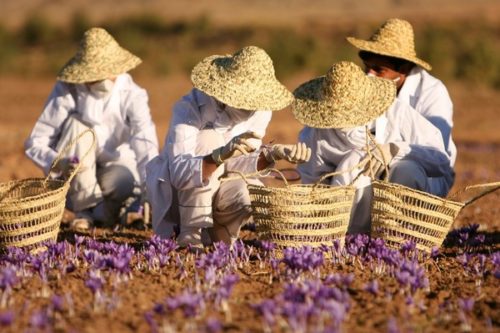
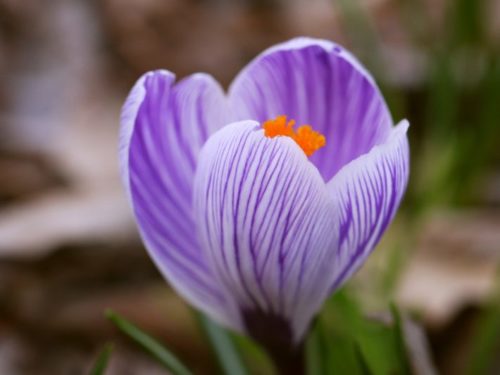
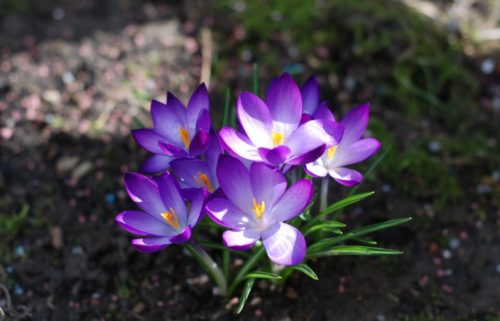
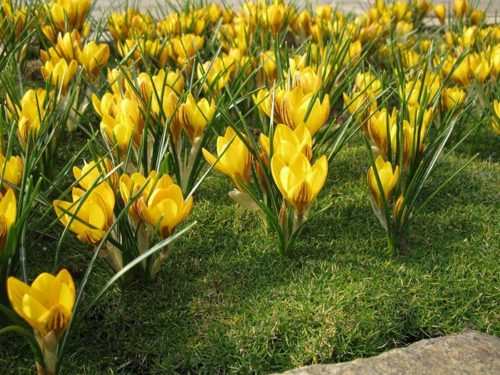

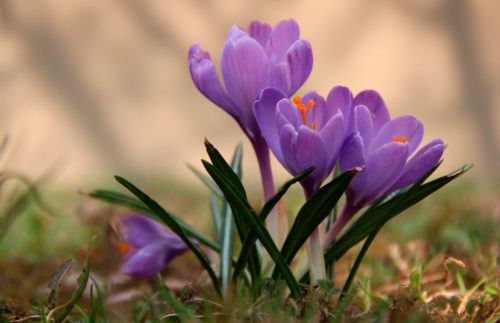
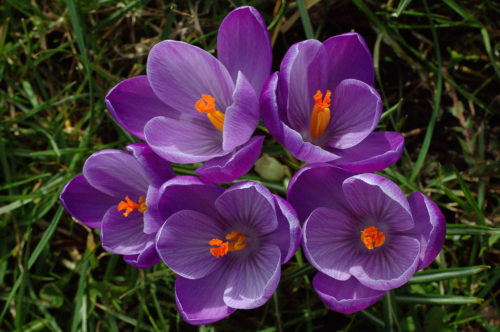
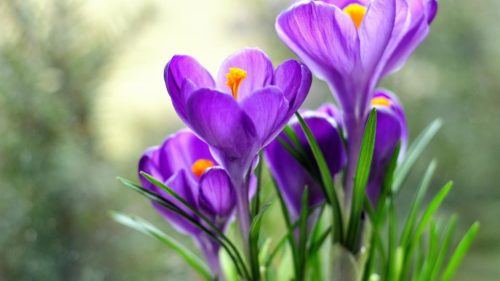
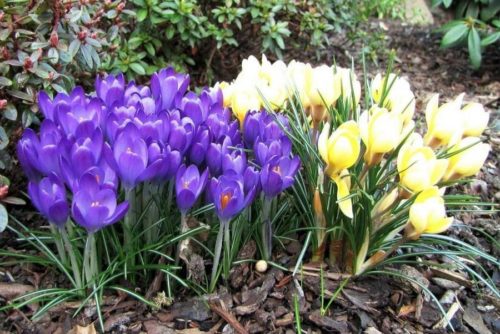
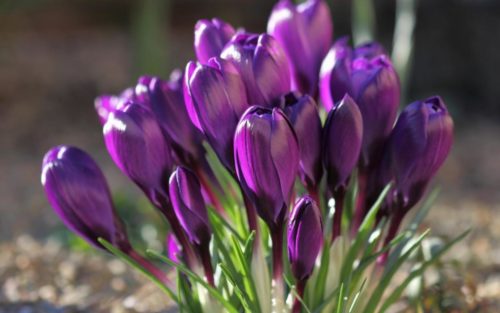
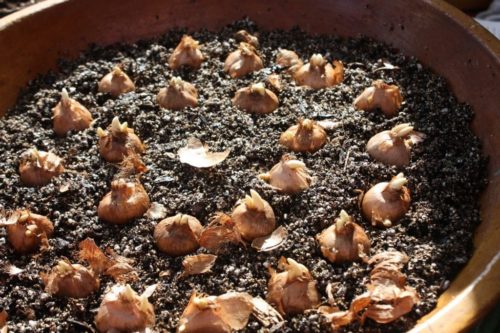
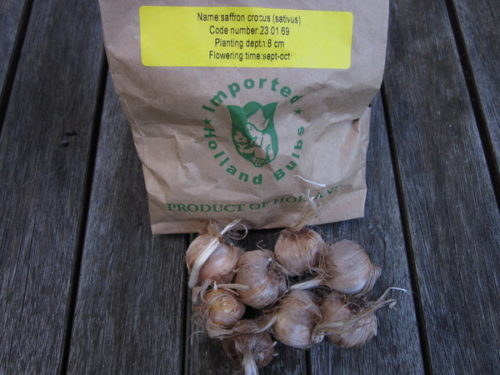
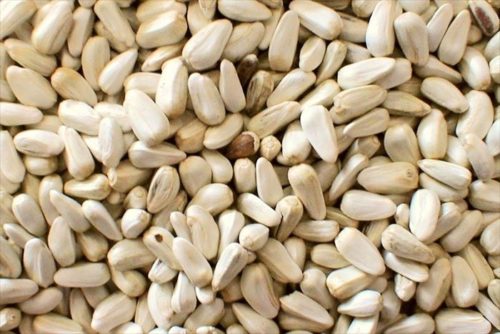
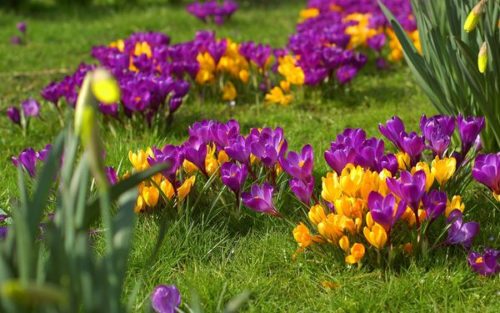

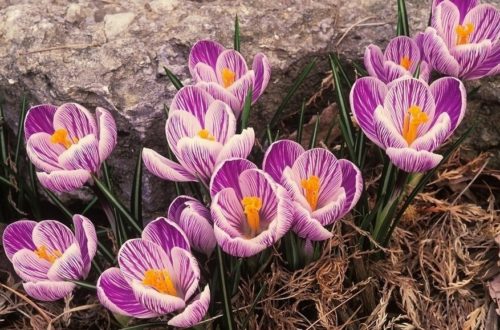
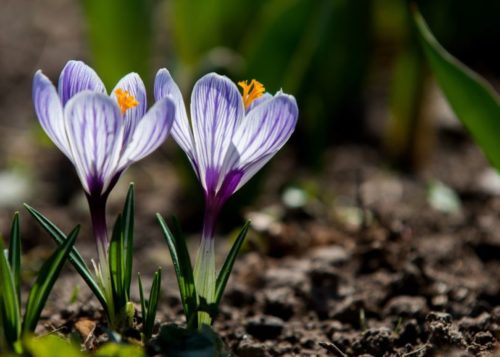
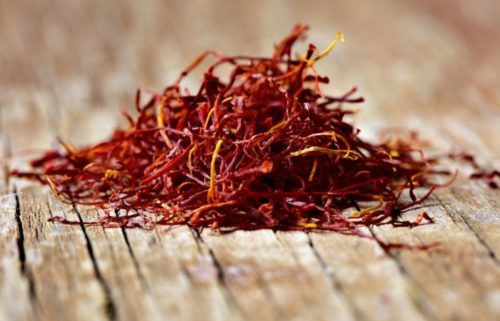
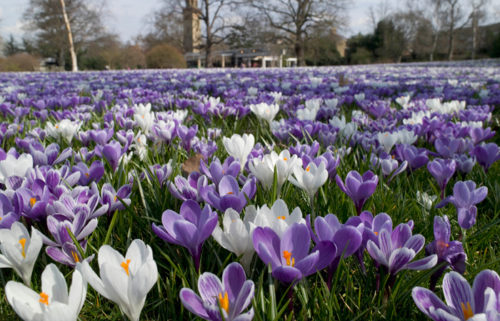
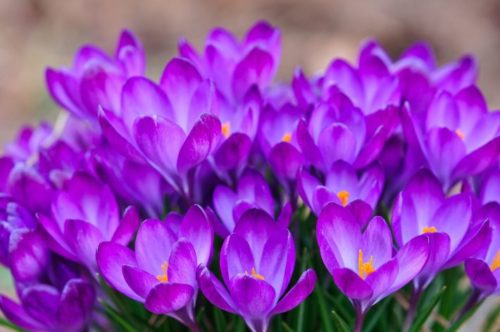
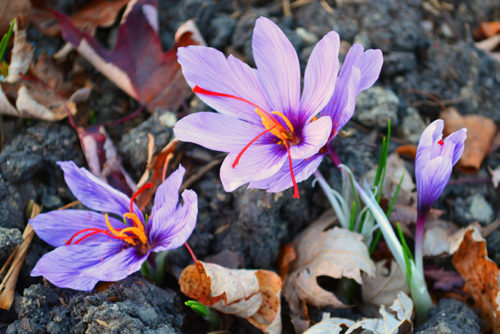
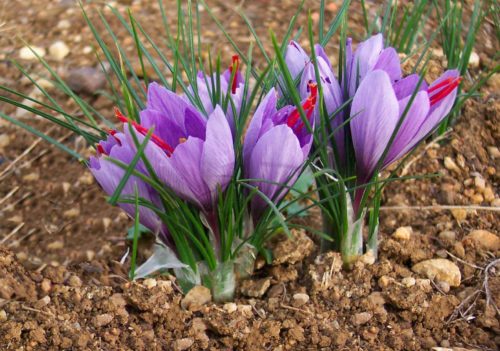












 Start a discussion ...
Start a discussion ...